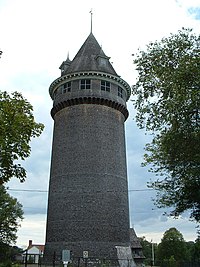
Quick Facts

Biography
Thomas William Lawson (February 26, 1857 – February 8, 1925) was an American businessman and author. A highly controversial Boston stock promoter, he is known for both his efforts to promote reforms in the stock markets and the fortune he amassed for himself through highly dubious stock manipulations.
The Scituate, Massachusetts Historical Society proclaimed 2007 the "Year of Thomas W. Lawson" in commemoration of the sesquicentennial of Lawson's birth.
Life and career


Thomas William Lawson was born February 26, 1857 at Charlestown, Massachusetts. Lawson ran away from home to become a clerk in a Boston bank, and soon began speculating in stocks. He was a principal mover in the promotion of companies trying to establish the small town of Grand Rivers, Kentucky as a major steel-producing city. Lawson specialized in shares of copper-mining companies, which were then a staple of the Boston stock market, and became a multimillionaire during the copper boom of the late 1890s. He built the lavish estate called Dreamwold in Scituate, Massachusetts. The site's most spectacular building is known as the Lawson Tower (also called "Grampy's Tower" by local children), a water tower with a shingled outer shell and observatory which has spectacular views of the area from its observation deck.
In 1899, he joined Henry H. Rogers and William Rockefeller in forming Amalgamated Copper Mining Company, a company that combined several copper mining companies, mostly in Butte, Montana, and which tried to dominate the copper market. Amalgamated Copper was the subject of much criticism then and for years afterward. Amalgamated later became Anaconda Copper Mining Company in 1915. However, Lawson later broke with the financial backers of Amalgamated, and became an advocate for financial reform.
Lawson was an independent candidate for the United States Senate in 1918. He finished a distant third with 5.26% of the vote.
Lawson authored several books, the most famous of which was Frenzied Finance: the Crime of Amalgamated, his controversial account of the formation of the Amalgamated Copper Company.
The Thomas W. Lawson, the only seven-masted schooner ever built, was named after him. As an odd coincidence, Lawson, who was intensely superstitious, wrote the novel Friday the Thirteenth in which a broker picks that day on which to bring down Wall Street; the Thomas W. Lawson, in which he had invested heavily, was wrecked off the Isles of Scilly at 2:30 am GMT on Saturday 14 December 1907, but to Lawson, at home in Boston, it was at that time still Friday the 13th.
Lawson married Jeannie Augusta Goodwillie in 1878, and the couple had six children. His grandson Thomas Lawson McCall, the son of his daughter Dorothy, served as governor of Oregon. Though once a very wealthy man, Lawson died in poverty. He is generally credited in the US with the Lawson sofa, made for him at the turn of the 20th century. It was a square, overstuffed sofa on a generous scale with loose seat cushions and pillows.
Books by Thomas Lawson
- The Krank: His Language and What it Means (1888) a glossary of baseball expressions
- History of the Republican Party
- The Lawson History of the America's Cup (1902), with Winfield M. Thompson
- Frenzied Finance, the Crime of Amalgamated (1906)
- Friday the Thirteenth (1907)
- The Remedy (1912)
- The High Cost of Living (1913)
- The Leak (1919)
- Lawson, Thomas W; Thompson, Winfield M (1902). The Lawson History of the America's Cup. Boston: Winfield M. Thompson. Retrieved 2012-05-06.
- Lawson, Thomas W (1906). Frenzied Finance, the Crime of Amalgamated. New York: Ridgway–Thayer Company. Retrieved 2012-05-06.
Lawson in fiction
Lawson is believed to have been the inspiration for the protagonist of David Graham Phillips' 1905 novel The Deluge.

 Pisces
Pisces